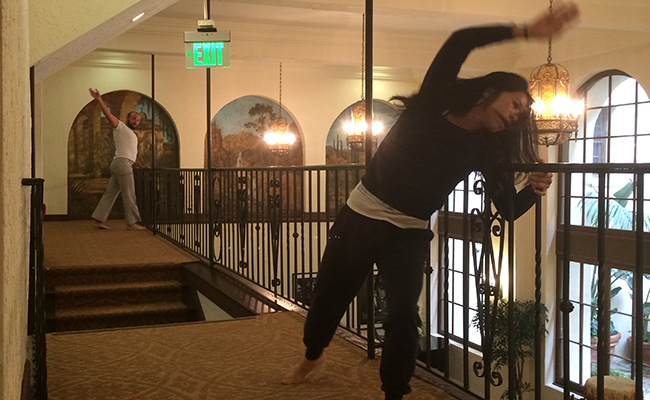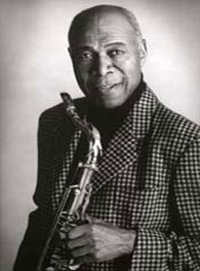Heidi Duckler Dance Theatre helps revive a historic jazz landmark on Central Avenue.

Marisa Labog and Joe Schenck rehearse on the balcony in the lobby of Dunbar Village. | Christina Campodonico
By day, a “For Lease” sign hangs in the window of the Dunbar Hotel’s empty storefront on Central Avenue, but on Saturday night this barren room came to life as dancers from the Heidi Duckler Dance Theatre kicked up dust from the concrete floor, grabbed onto the room’s barred windows and clung to its steel columns, captivating a crowd of dance-lovers and community leaders who descended upon the historic South Los Angeles landmark to see “Dancing at Dunbar.”
Hours earlier, at 5 p.m., the troupe previewed its choreography for a handful of residents living at Dunbar Village, the affordable housing development on site with the Dunbar Hotel.
An air of easy comfort pervaded the lobby. Some audience members relaxed in large leather armchairs, nibbling on fruit and cookies. Others milled in and out of the lobby with their bikes and grocery bags, pausing briefly to look up at dancers Marisa Labor and Joe Schenck as they wrapped themselves around columns and bannisters on the second-level balcony overhead. [Read more…]









 The Los Angeles Jazz Society is hosting concerts at three LAUSD elementary schools as part of the Black History Month celebration. These concerts are a part of a larger initiative to bring jazz programs to public schools.
The Los Angeles Jazz Society is hosting concerts at three LAUSD elementary schools as part of the Black History Month celebration. These concerts are a part of a larger initiative to bring jazz programs to public schools. Listen to the audio story here:
Listen to the audio story here:




